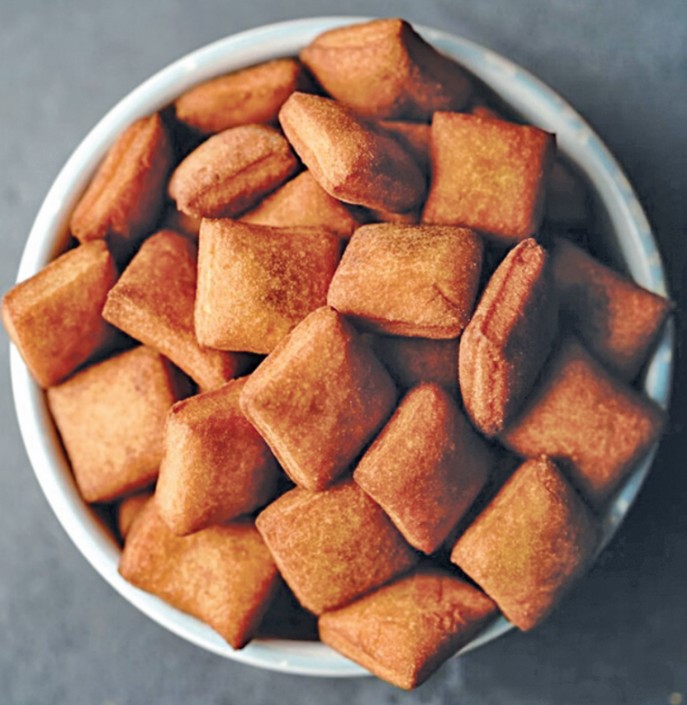Top Stories
Home Chefs Revive Traditional Diwali Flavors Across India

The essence of Diwali is experiencing a revival as home chefs across India reclaim traditional snacks that have faded in the face of commercialisation. As families increasingly opt for store-bought sweets, a grassroots movement is emerging, with cooks like Nalini Damodar from Pune and Arpita Lad from Junagadh striving to reconnect communities with the authentic tastes of the festival.
Rediscovering Culinary Heritage
For many, the arrival of Diwali was once marked by the aroma of ghee, the crunch of roasted poha, and the sizzling of ingredients in an iron kadhai. Today, however, the market is dominated by imported chocolates and factory-made sweets, leading to a significant loss of homemade essence.
“There’s something vital missing,” admits Nalini Damodar, who runs a small home-based business selling traditional Maharashtrian snacks. “When I realized my daughter didn’t know what anarsee was, it broke my heart.” She recalls the days when preparations for Diwali began weeks in advance, with families making snacks together. Now, many simply make a quick trip to the supermarket.
Challenges in the Kitchen
The revival of traditional recipes is not without its challenges. Arpita Lad reflects on the difficulties of sourcing ingredients, joking that it feels like a treasure hunt. “You often have to visit multiple shops to find what you need,” she says.
Time constraints further complicate the effort. Nisha Mudiraja from Hyderabad emphasizes that traditional cooking requires patience. “Making Pootharekulu is a slow process. Today, everyone wants quick results,” she explains. Despite these hurdles, interest is growing. “Once people taste these dishes, they realize how much flavor they’ve been missing. It’s not just about food; it’s about emotion.”
The Importance of Tradition
For those who grew up before the 1990s, the heart of Diwali lay not in commercial gifts but in the exchange of homemade sweets. Sumitra Pujari from Karnataka recalls how the preparation of manjal ire da gatti (rice and coconut dumplings wrapped in turmeric leaves) signified the festival’s arrival, while Sakshi Amte reminisces about sneaking into the kitchen to grab handfuls of chiwda.
Food scholars suggest that traditional Diwali snacks are essential components of India’s regional identities, with each state boasting its own festive treats. In Maharashtra, for example, one would find chiwda and anarse, while Gujarat is known for farsi poori and kachri. The fading of these recipes represents not only a culinary loss but also a threat to cultural heritage.
Kavi Khotwani, a food connoisseur, emphasizes the need to pass down these recipes to avoid their disappearance. “Traditional recipes must be preserved for future generations,” he urges.
Health Benefits of Traditional Snacks
Nutritionists advocate for the revival of these homemade snacks, noting that they are often healthier than their modern counterparts. Snehal Yewale, a health coach based in Mumbai, points out that traditional snacks typically consist of simple, natural ingredients such as jaggery, flours, and spices. “They provide energy without the chemicals or refined sugars found in many store-bought options,” she explains.
Yewale believes that returning to these recipes promotes mindful eating and reflects the true spirit of Diwali, which is about sharing good food made with love.
Harnessing Modern Platforms for Revival
Interestingly, social media platforms like Instagram and YouTube are aiding in the resurgence of traditional Diwali treats. Short videos showcase young chefs learning time-honored recipes from their mothers and grandmothers, prompting viewers to share their own nostalgic memories.
In addition to online engagement, pop-up stalls and workshops featuring traditional snacks are reappearing, helping to reconnect families with the flavors and stories of past Diwalis.
As this movement unfolds, Nalini Damodar is taking her mission a step further by teaching school children how to make rava laddoos. “They think Diwali means chocolate boxes,” she remarks. “But they will remember the taste of these laddoos for life.”
In the kitchens of India, the revival of traditional Diwali snacks is more than just about food; it is about bridging generations, retelling stories, and restoring the soul of the festival. As home chefs light their stoves instead of shopping carts, the rich flavors of Diwali are gradually finding their way back home, promising not just a feast but a rekindling of cherished memories.
-

 World5 months ago
World5 months agoSBI Announces QIP Floor Price at ₹811.05 Per Share
-

 Lifestyle5 months ago
Lifestyle5 months agoCept Unveils ₹3.1 Crore Urban Mobility Plan for Sustainable Growth
-

 Science4 months ago
Science4 months agoNew Blood Group Discovered in South Indian Woman at Rotary Centre
-

 World5 months ago
World5 months agoTorrential Rains Cause Flash Flooding in New York and New Jersey
-

 Top Stories5 months ago
Top Stories5 months agoKonkani Cultural Organisation to Host Pearl Jubilee in Abu Dhabi
-

 Sports4 months ago
Sports4 months agoBroad Advocates for Bowling Change Ahead of Final Test Against India
-

 Science5 months ago
Science5 months agoNothing Headphone 1 Review: A Bold Contender in Audio Design
-

 Top Stories5 months ago
Top Stories5 months agoAir India Crash Investigation Highlights Boeing Fuel Switch Concerns
-

 Business5 months ago
Business5 months agoIndian Stock Market Rebounds: Sensex and Nifty Rise After Four-Day Decline
-

 Sports4 months ago
Sports4 months agoCristian Totti Retires at 19: Pressure of Fame Takes Toll
-

 Politics5 months ago
Politics5 months agoAbandoned Doberman Finds New Home After Journey to Prague
-

 Top Stories5 months ago
Top Stories5 months agoPatna Bank Manager Abhishek Varun Found Dead in Well









